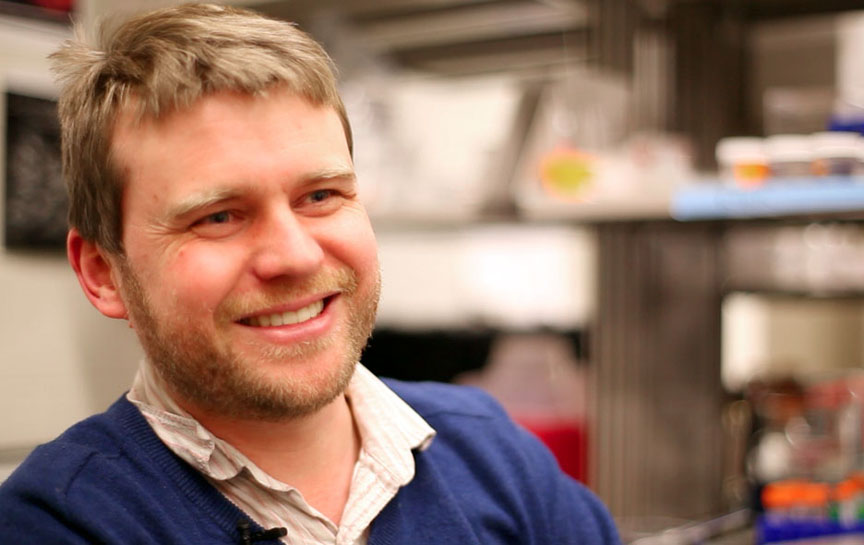PROVIDENCE, R.I. [Brown University] — A Brown University biologist who uses sophisticated genomic and computational techniques to learn about little-known animals that help show how complex multicellular organisms, including humans, were formed, has been named the 2011 recipient of the National Science Foundation’s Alan T. Waterman Award.
Casey Dunn, assistant professor of biology in the Department of Ecology and Evolutionary Biology, is the first Brown faculty member to receive the award and the 10th scientist in the biological sciences category to be honored in the 36-year history of the program, established by Congress on the 25th anniversary of the NSF in honor of its first director.
“The Waterman Award is designed to recognize outstanding young researchers like Casey Dunn,” said NSF Director Subra Suresh. “His research has already made substantial contributions to our understanding of the origins of a diversity of life. His insights should further this important field of study in the years to come.”
In addition to a medal and other recognition, Dunn will receive $500,000 over three years to pursue his research.
Dunn said the award was especially timely, as he has a “shovel-ready project” to collect siphonophores, rare marine organisms that live at great depths in the open oceans. Dunn wants to collect specimens and use new genomic tools to learn which genes are responsible for similarities and differences among these multicelled organisms.
Perfect timing
With new DNA-sequencing tools and access to supercomputing, Dunn and his colleagues had already begun running their first analyses. Then the Waterman Award arrived.
Credit: Mike Cohea/Brown University
“I’m really excited because with this award I can go after some animals that I would not have been able to get otherwise,” said Dunn, whose collection expeditions may include waters off the coast of France and in the Pacific Ocean.
“We had already run the first analyses and were just starting to look for funding,” Dunn said. “The timing could not have been better. We’re ready to start these projects.” This interdisciplinary research requires fieldwork at remote locations to collect specimens, new laboratory-based tools for collecting genome data, and large analyses that require a supercomputer. This work will be facilitated by recent investments Brown has made to upgrade DNA sequencing tools and its scientific computing infrastructure.
Siphonophores are a unique group of jellyfish, described as superorganisms. They are colonial animals, with thousands of genetically identical bodies. Unlike other colonial animals like corals, all the bodies are specialized for particular tasks such as feeding, swimming, and defense. Dunn and the members of his lab want to find out which genes in siphonopores are tasked with their respective functions and how evolutionary changes in gene activity correspond with body type.

Credit: Mike Cohea/Brown University
Understanding how evolution has shaped siphonophores into such complex colonial organisms may help explain how evolution was able to generate complex multicellular organisms, including humans.
Dunn also will use the award to build computational tools for evolutionary analyses of genomic data. He plans to hire a data-analysis programmer and add at least one postdoctoral researcher in computational biology to his lab.
In addition to his research, Dunn has created an acclaimed website that reveals the unexpected world of animals — including siphonophores — through innovative animation, podcasts and text. The site has been featured in various media, including National Public Radio’s Science Friday website. He also has just co-authored a book to teach scientists how to work with large datasets, titled Practical Computing for Biologists (Sinauer Associates Inc.)
The annual Waterman award recognizes an outstanding young researcher in any field of science or engineering supported by NSF. Candidates may not be more than 35 years old, or seven years beyond receiving a doctorate, and must stand out for their individual achievements. The selection committee is made up of 12 appointed members from academia and industry.

